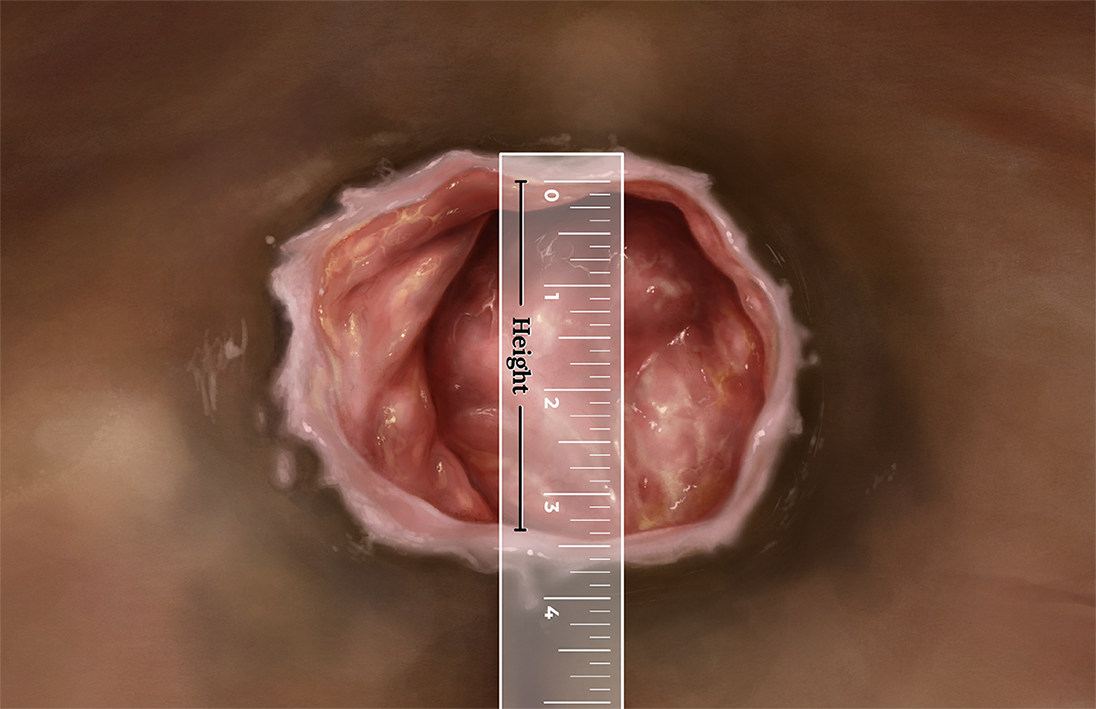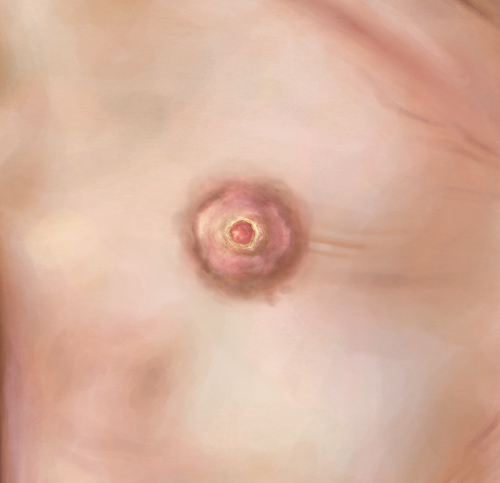How to Tell if the Pressure Injury is Healing
As pressure injuries heal, they get smaller and fill with new tissue. This tissue can appear pinkish or white and typically forms from the edges and moves towards the center. You might see smooth or bumpy surfaces with occasional bleeding. The pressure injury does not go back through the stages; once it’s healed with new tissue, it is called the healed version of the last stage that it reached, for example “healed stage 4 injury.”
Each stage of injury will have different healing times. A stage one injury is much easier to heal than a stage 4 or an unstageable and deep tissue injury.
Each stage of injury will have different healing times. A stage one injury is much easier to heal than a stage 4 or an unstageable and deep tissue injury.


Remember, healing a pressure injury can be a difficult, long, and imperfect process. The healing times shown above are estimations, and the illustrations of healing injuries may not match perfectly to the wound that you’re trying to heal. Be kind to yourself and to everyone else who may be involved.
Day-to-day changes in a pressure injury can be hard to see, but it’s easier to notice changes from week-to-week. To track healing, you can take a picture of the injury every week and compare it to the previous week’s picture. If the injury gets smaller and shallower, it’s a good sign that it’s healing.
Measuring a Wound
Pressure injuries can also have their length, width, and depth measured to help determine their progression. You can measure their length and width by placing a clean ruler next to the injury’s longest and widest points and record those numbers every week. Depth is usually measured last, and is usually measured by placing a clean cotton-tip applicator in the deepest part of the wound. Measuring depth should not be done by yourself unless you’ve been shown how to by a health professional. If done incorrectly, the pushing can cause the wound to open.



For stage 3 and 4 injuries, tunneling and undermining may have to be measured as well. Measuring tunneling and undermining should not be done by yourself, and should be carried out by a healthcare professional.
To measure tunneling, professionals carefully insert a sterile cotton-tip applicator into the tunnel and mark the depth on the applicator at the wound edge. To measure undermining, healthcare professionals place a sterile cotton-tip applicator underneath the surface edges of the wound and mark the depth on the applicator at the wound edge. When checking for undermining, professionals gently check the entire edge of the wound, or at each “hour” of a clock. This helps them get a better understanding of the wound borders that are not visible to the eye.

Complications
There are several issues that can happen to a person living with a pressure injury. This includes:
Tunneling
The pressure injury has formed a channel, or a tunnel, underneath the skin and into the layers of tissue. Tunneling wounds can be more difficult to treat and often taken longer to heal.
Fistulas
The pressure injury has tunneled far enough to form an abnormal passage between the skin and an organ. Pressure injuries that have formed fistulas are difficult to treat and take longer to heal.
Skin Infections
One of the most serious complications of pressure injuries is skin infection. Pressure injuries that are infected may have a discharge that is yellow or green and has a bad odor. The person may have a fever and may not feel well. It is very important to seek medical attention if the pressure injury suddenly worsens.
Bone & Joint Infections
An infection from a pressure injury can also infect the joints and bones. Bone infections, osteomyelitis, can reduce the function of joints and limbs. The person may have a fever and may not feel well. It is very important to seek medical attention if the pressure injury suddenly worsens.
Sepsis
If an infected pressure injury is not treated, the infection can spread through the blood to other organs. In some cases, this can make those organs stop functioning, which can be life-threatening.













